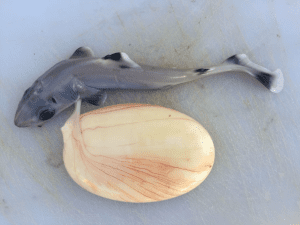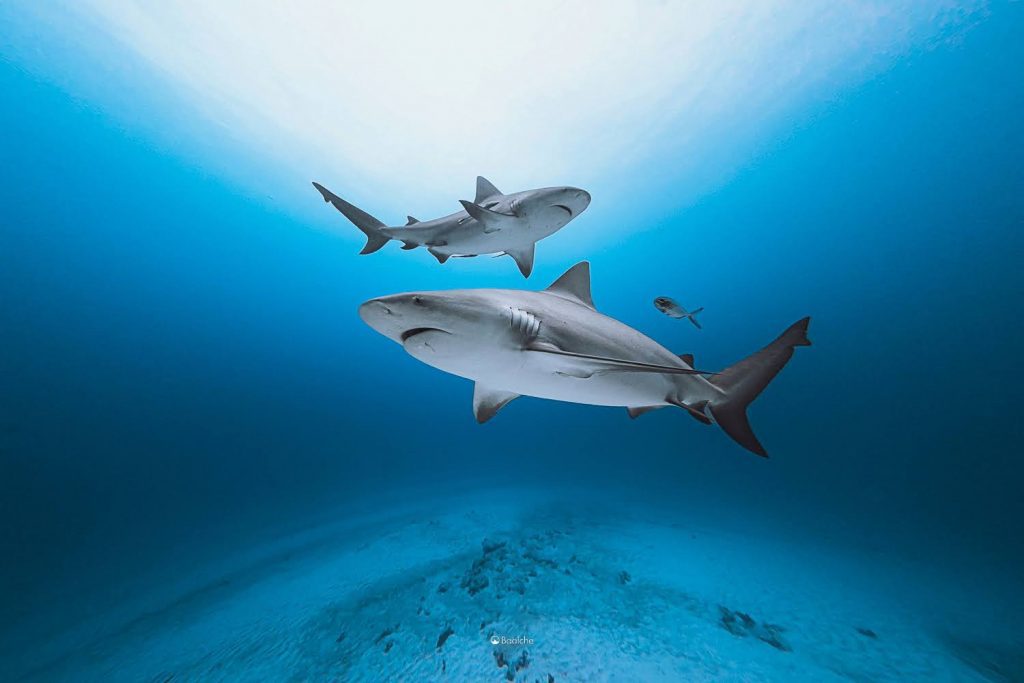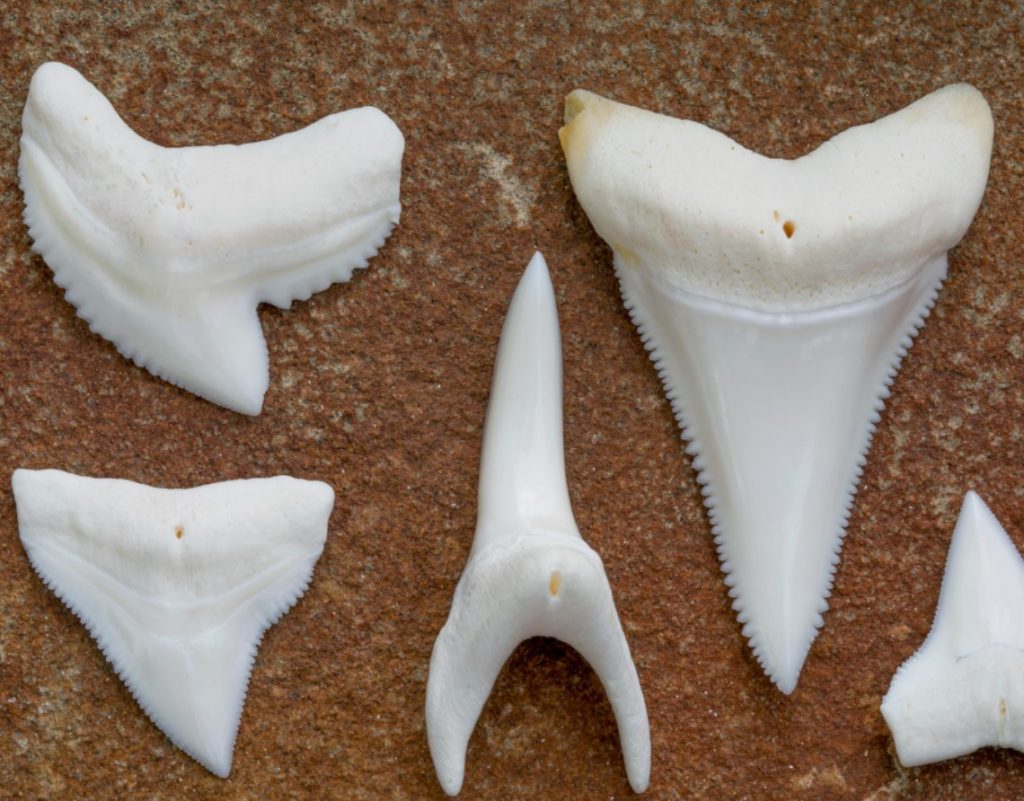The reproductive modes of elasmobranchs are surprisingly varied and complex, but generally fall into two broad categories: oviparity (egg laying) and viviparity (live birth of fully developed young). About 40% of shark species, and all species of skates, lay eggs.
Also called mermaids purses, the egg cases are usually attached to substrate, such as kelp or rocks, and the embryos are nourished from a yolk sac until it has all been absorbed and they push their way out into the world as fully-formed young. Shark species that lay eggs tend to be bottom-dwelling, and include the wobbegongs, horn sharks, and some cat sharks.

Egg case of a small spotted catshark – Sander van der Wel
For the viviparous species, there are several strategies for nourishing the young during gestation. Some species, including angel sharks and cownose rays, produce enormous eggs, which become yolk sacs that are the sole source of nutrients for the developing embryo during the entire time of gestation and for a short time after birth. This mode of reproduction is called yolk sac viviparity. Lamnid sharks such as makos, sand tigers, and white sharks, produce a small number of fertilized eggs that develop into pups, but continue to produce unfertilized eggs throughout gestation that are eaten by the embryos. The most extreme version of this egg-eating strategy, called oophagy, is demonstrated by sand tiger shark embryos, which eat the unfertilized eggs as well as the other developing pups.

Yolk sac viviparity: a gulper shark embryo with large yolk sac. Photo Rachel Graham
The most advanced form of reproduction is seen in shark species such as the Caribbean reef shark, hammerheads, and blacktip sharks, and is known as placental viviparity. In these sharks, the fertilized egg starts as a small yolk sac, which is absorbed by the embryo over the first few weeks of gestation, and then develops into a placenta that attaches to the wall of the uterus. In the later months of gestation, the embryo receives nutrients from the mother via the umbilical cord.
All of these reproductive strategies are energetically costly to the females, but the advantage is that the young are born relatively large and well-nourished, and are therefore more likely to survive the dangerous few months as newborn pups. Because they expend so much energy producing such high quality offspring, many shark species do not give birth every year, or even every other year.
Fun fact:
Do newborn sharks have belly buttons? They do! Known as umbilical scars, they mark the point where the umbilical cord was attached to the pup when they were in utero or inside the egg case, and they are located between the pectoral fins rather than the belly. When the shark pups are born, the umbilical cord is torn away, leaving an open scar that heals as they grow.
Glossary
Gestation: the time before an embryo is born
Elasmobranch: the category of fishes that includes sharks, rays, and skates
Pup: baby shark or ray
Placenta: The point of attachment of the umbilical cord to the uterus of the female, which provides nutrients for baby sharks before they are born
Umbilical cord: The cord that connects the pup to the source of nutrients (yolk sac or placenta) before they are born
In utero: The time when pups are inside the uterus of the female
Yolk sac: A large sac filled with yolk that provides nourishment to pups before they are born
Skate: A relative of sharks and rays. It can be differentiated from rays by the absence of spines on the tail and presence of dorsal fins. Skates lay egg cases, while rays give live birth
Embryo: A pup that has not been born yet
Neonate: A newborn shark, ray, or skate



